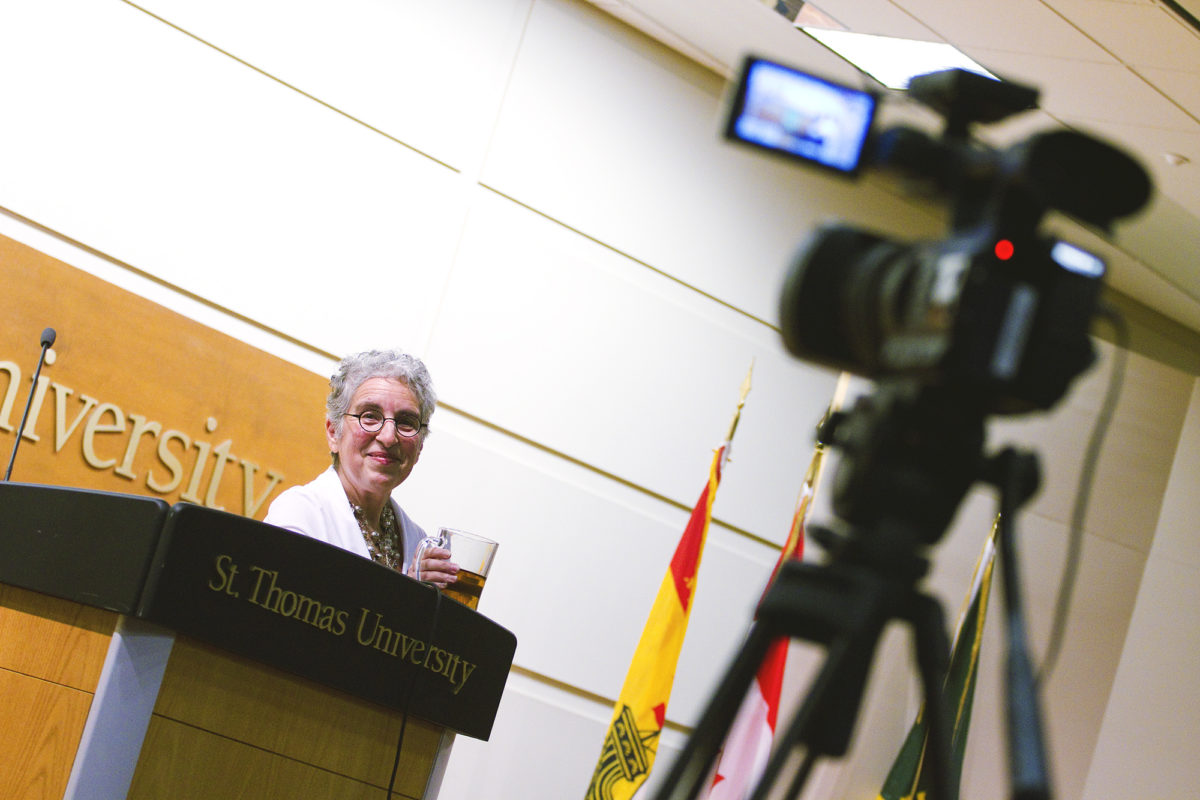
If the average consumer was watching an all-male political panel on TV, no one would think anything of it. If the political panel was all female, it would stand out and there would be raised eyebrows, said Talin Vartanian to an audience of about 130 last week.
Men make up 75 per cent of the media on radio and TV. Vartanian, who is the STU Irving chair in journalism, said this is a problem.
“That is one of the many ways the mainstream media shaft women everyday. The vast majority of opinions and voices we read, we watch, we hear belong to men.”
Vartanian said studies show gender equality in the media won’t be reached for about 75 years.
“Why does this matter? When we don’t read or see or hear women it sends the message that our opinions don’t matter,” she said. “It denies women access to the influence and the power of the media. It communicates to the next generation – to young girls – that they should not expect to be heard as often as men and they will not have the same opportunities as men.”
Vartanian said it will not take as long to reach gender equality in the media if we start making noise and taking action.
A radio journalist, Vartanian has been in the field for almost three decades. She is mostly known as the producer of CBC’s programs Morningside, As It Happens and The Sunday Edition.
Vartanian said she tries to make a difference everyday she is on the job. She said guests on radio shows tend to be mostly men and a lot of reporters are unwilling to try to balance the amount of time men and women are on the air.
She said, “their main argument is ‘it’s the quality, not the quantity that matters. We should be making these decisions based on what they have to say, not on their gender’. Frankly, this is insulting. In effect it’s saying we turn to men for quality and to women for tokenism – that women wouldn’t have anything valuable to add to the conversation.”
She said this needs to change and, as consumers, we can make a difference.
“Consumers wield more power than we realize. But it’s power that most of us don’t harness.”
Vartanian said the biggest way consumers can inflict change on this problem is to make noise.
“Make calls to CBC or CTV or the Daily Gleaner to say you expect them to give women equal time. Post on their Facebook page that you’re tired of hearing reporters ask women how they balance work and family. A question they never ask men,” said Vartanian.
She told the audience of mostly journalism students that this is an inside job as well. She said we need to look for women’s voices, and for new voices, while producing stories.
Vartanian said when women get to the top of a news organization, they tend not to rock the boat.
“What I’ve often seen in student interns is a fear of making waves. They think the best way to get ahead is to blend in, walk into a newsroom and do things the way they’ve always been done,” said Vartanian. “But the best and the brightest are the ones who step out on a limb and who clearly have a fire in their belly.”
Vartanian said some young journalists worry about keeping their jobs while still making a difference.
“In any job that you take there is a certain amount of risk. My view is that taking a risk in this direction is worth taking.”
